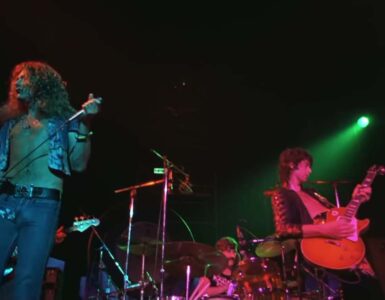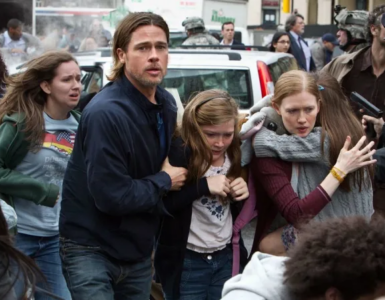What does the legacy of the Fantastic Four mean for today’s reader? The answer lies in their ability to connect with our modern dilemmas, needing to navigate uncertainties and forge authentic connections with one another in an often fragmented society. Each member of the team—from the fiery Susan Storm to the unyielding Reed Richards—embodies qualities and challenges that are strikingly relevant in our everyday lives.
In anticipation of the upcoming release of the MCU’s “Fantastic Four,” we’ll dig into the mythology of the quartet of heroes. Let’s dig in and celebrate the extraordinary facts that make the Fantastic Four not just heroes, but timeless icons of hope and exploration in a universe that craves connection.
Origin
The Fantastic Four, Marvel Comics’ “First Family,” made their first appearance in The Fantastic Four #1, cover-dated November 1961. This groundbreaking issue, created by writer Stan Lee and artist Jack Kirby, introduced a new era of superhero storytelling.
The summary of their origin story in this comic details how brilliant scientist Reed Richards, his girlfriend Sue Storm, her younger brother Johnny Storm, and Reed’s best friend Ben Grimm, embark on an unsanctioned space flight. Their goal was to beat the Communists into space, but their experimental rocket was bombarded by cosmic rays during the journey. Upon crashing back to Earth, they discovered they had been fundamentally transformed: Reed gained the ability to stretch his body (Mr. Fantastic), Sue could turn invisible (Invisible Girl, later Invisible Woman), Johnny could ignite himself in flames and fly (Human Torch), and Ben was transformed into a monstrous, rock-skinned powerhouse (The Thing). Unlike previous superheroes, they eschewed secret identities and often squabbled amongst themselves, bringing a new level of realism and interpersonal dynamics to the genre.
Familial Composition
The Fantastic Four’s team composition is exceptionally unique in comics due to its foundation as a true family unit rather than just a group of individuals with powers. Unlike most superhero teams formed by recruitment or shared ideology, the Fantastic Four consists of a married couple (Reed Richards/Mr. Fantastic and Sue Storm/Invisible Woman), Sue’s younger brother (Johnny Storm/Human Torch), and their best friend (Ben Grimm/The Thing).
This familial bond sets them apart, as their conflicts and triumphs often stem from deeply personal relationships—sibling rivalries, marital squabbles, and the inherent friction of living together with extraordinary abilities. They are not anonymous heroes; their public identities are known, adding another layer of celebrity and relatable human problems to their fantastical adventures. Their powers, gained simultaneously from a cosmic ray exposure, are also uniquely diverse for a shared origin event: Reed’s stretching, Sue’s invisibility and force fields, Johnny’s pyrokinetic abilities and flight, and Ben’s rocky, super-strong form. This combination of an authentic family dynamic, public recognition, and distinct yet complementary powers makes the Fantastic Four’s team composition a pioneering and enduringly unique aspect of the superhero genre.
Reed Richards
Reed Richards, also known as Mr. Fantastic, is the brilliant scientist and leader of the Fantastic Four. He gains his powers, along with the rest of the team, after their experimental spaceship is bombarded by cosmic rays during an unsanctioned space flight. This exposure transforms Reed’s body, granting him the ability to stretch, contort, and reshape himself into nearly any form, allowing him to adapt to various situations.
Beyond his superhuman elasticity, Reed’s defining characteristic is his unparalleled intellect. He is widely considered the smartest man in the Marvel Universe, with mastery in virtually all scientific fields, including engineering, physics, chemistry, and biology. His vast knowledge and inventive genius are crucial to the Fantastic Four’s adventures, as he often devises solutions to seemingly impossible problems and creates advanced technology. While sometimes portrayed as so focused on science that he can be emotionally distant, at his core, Reed is a family man who deeply loves and seeks to protect his wife Sue Storm (Invisible Woman), brother-in-law Johnny Storm (Human Torch), and best friend Ben Grimm (The Thing).
Sue Storm
Susan Storm-Richards, known as the Invisible Woman, is a founding member of the Fantastic Four and the first female superhero created by Marvel in the Silver Age of comics. She gained her powers, along with the rest of her family and Ben Grimm, when their experimental spaceship was exposed to cosmic rays.
Initially, Sue’s primary power was limited to turning herself and objects invisible, which earned her the name “Invisible Girl.” However, her abilities evolved significantly over time. She developed the capacity to project powerful, invisible psionic force fields, which she can manipulate for a wide range of offensive and defensive purposes. These force fields can be used to create shields, constructs, blasts, and even to internalize within an opponent. Sue is often considered the emotional anchor of the team, balancing the intellect of her husband Reed, the hotheadedness of her brother Johnny, and the gruffness of Ben.
Johnny Storm
Johnny Storm, also known as the Human Torch, is the youngest member of the Fantastic Four and Sue Storm’s impulsive younger brother. Like the rest of the team, he gains his incredible powers after their experimental space flight is exposed to cosmic rays.
Johnny’s abilities are pyrokinesis, meaning he can generate, control, and absorb fire and heat. He can engulf his entire body in flames, becoming a “human torch,” which also grants him the power of flight by propelling himself with his fire. He can project powerful blasts of flame, create fiery constructs, and even achieve a “nova” level of heat output, which is immensely destructive. Personality-wise, Johnny is often depicted as brash, arrogant, and a charming thrill-seeker. He’s known for his quick wit, love of pranks (especially on Ben Grimm), and a more carefree attitude compared to the often serious Reed and Sue.
Ben Grimm
Ben Grimm, famously known as The Thing, is a core member of the Fantastic Four, transformed into a large, rock-skinned powerhouse after being exposed to cosmic rays during the ill-fated space flight. This monstrous appearance, which he often refers to as a “revoltin’ development,” is a constant source of anguish for him, contrasting sharply with the more easily concealed or adaptable powers of his teammates.
Despite his gruff exterior and frequent complaints, particularly directed at his best friend Reed Richards (whom he blames for his transformation), Ben possesses a heart of gold. He is incredibly loyal to his “family” – Reed, Sue, and Johnny – and is known for his unwavering courage and powerful battle cry, “It’s clobberin’ time!” His powers include superhuman strength, stamina, and incredible durability, making him the team’s primary strongman.
Dr. Doom
The Fantastic Four’s rogues’ gallery is one of the most iconic and diverse in comics, ranging from cosmic threats to personal nemeses, but none stands as tall as Doctor Doom. First appearing in The Fantastic Four #5 (April 1962), Victor von Doom is not just a villain but Reed Richards’ intellectual rival and the tyrannical ruler of Latveria.
Their rivalry is deeply rooted in their shared past as brilliant college students, with Doom blaming Reed for a disfiguring accident that led to his iconic armored appearance. This personal vendetta fuels Doom’s relentless pursuit of power and his belief that he is the only one fit to rule the world. He combines supreme scientific genius, mastering robotics (creating Doombots), time travel, and advanced weaponry, with formidable sorcery, making him a truly multifaceted threat. Doom’s grand schemes often involve attempts to usurp global power, often by manipulating cosmic forces or exploiting weaknesses in the Fantastic Four themselves.
Baxter Building
The Baxter Building, first appearing in Fantastic Four #3 (March 1962), is more than just a headquarters; it’s practically a fifth member of the Fantastic Four. Located at 42nd Street and Madison Avenue in New York City, this fictional 35-story skyscraper serves as the team’s home, laboratory, and public face.
Originally owned by the Leland Baxter Paper Company, Reed Richards purchased the top five floors, transforming them into a state-of-the-art scientific facility and living quarters for the super-powered family. These upper levels are a marvel of advanced technology, featuring laboratories, training rooms, vehicle hangars for the Fantasticar, observatories, and even a rocket silo. Unlike other superhero hideouts, the Baxter Building is widely known to the public, meaning that while it offers prestige, it also makes the Fantastic Four an easy target for their vast array of enemies.
Cultural Impact
The Fantastic Four’s cultural impact on comics and wider popular culture is immense, largely because they spearheaded a revolutionary shift in superhero storytelling. Debuting in November 1961, Stan Lee and Jack Kirby deliberately broke away from the prevailing archetypes of morally perfect, stoic heroes with secret identities. Instead, they introduced a “First Family” who were publicly known, often squabbled, held grudges, and faced relatable human problems alongside cosmic threats. This unprecedented emphasis on flawed, relatable characters and interpersonaldynamics made them feel more human and accessible, paving the way for the “Marvel Method” and influencing the creation of other iconic Marvel characters like Spider-Man, the Hulk, and the X-Men, all grappling with their own personal struggles.
Fantastic Four and the Multiverse
The Fantastic Four are set to make their highly anticipated Marvel Cinematic Universe (MCU) debut with “The Fantastic Four: First Steps,” and their introduction is deeply intertwined with the ongoing Multiverse Saga. Rather than being established in the main MCU timeline (Earth-616), the film will reportedly introduce the team from an alternate universe, specifically Earth-828, which has a retro-futuristic 1960s aesthetic.
This creative decision by director Matt Shakman aims to avoid continuity issues, as the absence of such prominent public figures during major Earth-616 events like Thanos’ attack would raise significant questions. By placing them in a different reality, “First Steps” can function as a relatively standalone entry point for new viewers, while still connecting to the larger Multiverse Saga. It is expected that the team, including Pedro Pascal’s Reed Richards and Vanessa Kirby’s Sue Storm, will eventually find their way into Earth-616, likely as part of the climactic events of “Avengers: Doomsday” and “Avengers: Secret Wars.” This approach leverages the concept of the multiverse to introduce established versions of the characters without requiring a traditional origin story and positions the Fantastic Four as crucial players in the overarching multiversal narrative of the MCU.



